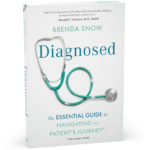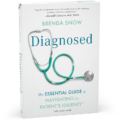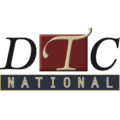By Amelia Eanes and Maggie Patry
True patient engagement creates ripple effects that transform both clinical outcomes and business results in a measurable way.
Measuring engagement isn’t just about numbers—it’s about the lives that are touched and the outcomes that are improved through strategic, thoughtful approaches to patient communication.
The concept of patient engagement has evolved significantly over the past 25 years. What began with individual patients sharing their stories to advocate for better treatment has grown into a systematic approach that integrates patient voices throughout every stage of the drug lifecycle. The benefits are undeniable—both for patients seeking better outcomes and for pharmaceutical companies striving to enhance clinical trial endpoints, recruitment, and commercialization efforts.
From Transactions to Transformations
Securing funding for early, meaningful patient engagement requires speaking in terms that resonate with decision-makers. This is where Return on Engagement (ROE) becomes valuable—a measurement framework that goes beyond traditional Return on Investment (ROI) to measure the high-value actions (HVAs) that drive better patient outcomes and brand value.
Traditional ROI measures financial returns, but ROE includes patient impact—the actions patients take that directly contribute to better health outcomes. These actions, such as securing an accurate diagnosis or seeking a specialist, are often overlooked when defining success. Yet, they are pivotal moments in a patient’s journey.
Building a Framework That Captures Real Value
By shifting focus from transactions to transformations, organizations can quantify how engagement strategies drive meaningful patient actions—actions that not only provide tangible benefits to patients but also generate brand value.
To measure patient engagement effectively, the process must start with listening. The life sciences industry needs to invest in insights and stories from diverse patient groups to understand the barriers and enablers within their journeys. For example, an enabling action might be recognizing symptoms early enough to seek medical help, leading to a correct diagnosis.
The Four-Step Approach to Measuring Impact
Every stage of the drug lifecycle has an objective or Call-to-Action (CTA) for the affected population. Aligning enabling actions with that CTA at each phase helps define and establish HVAs. For example, asking for and attaining treatment is captured at the “conversion” phase of the patient journey, making classic return on investment (profit/cost) inherent to this measurement approach.
Gathering real-world insights from groups representative of the affected population helps understand the likelihood of patients taking HVAs—such as asking for a prescription after attending a speaker event. Using a weighted value system creates measurement funnels that illustrate where patients are in their journey and how their actions contribute to organizational goals.
Beyond Numbers: The Human Dimension of Success
Effective programs include built-in touchpoints that capture offline and online engagement, helping brands communicate the tangible impact of their efforts. These touchpoints create measurement funnels that illustrate how each commercialization effort, whether disease awareness-focused or conversion-focused, contributes to overarching business goals.
While dollars spent and prescriptions filled are essential business metrics, the true measure of patient engagement work is far greater. Healthcare professionals shaping the landscape seek a return not only on financial investments but also on the investment of time, passion, and purpose.
The Personal Side of Patient Engagement
When engagement efforts yield real change—patients staying on therapy, receiving the right diagnosis, or feeling empowered to advocate for their care—the work has made a difference.
This mission connects with many healthcare professionals on a personal level. Those who have struggled for diagnoses understand the frustration and isolation of not knowing what’s wrong. They also know the power of shared stories—they foster connection, understanding, and hope.
Creating Ripple Effects That Last
When patients share their stories, they create a force multiplier—a ripple effect that extends far beyond a single conversation. Effective measurement models matter, but the real impact of patient engagement often transcends what can be measured.
Because when patients are truly reached, they receive something far more valuable than data points or prescriptions: hope.
Return on Engagement (ROE): A Step-by-Step Guide
1. Understand the Patient Journey
- Listen to diverse patient voices
- Map barriers and enablers at each stage
- Identify high-value actions that lead to better outcomes
2. Align Patient Actions with Brand Goals
- Define objectives for each lifecycle phase
- Connect patient actions to business metrics
- Establish clear calls-to-action
3. Assess Likelihood of Patient Actions
- Gather real-world insights from representative groups
- Measure probability of high-value actions
- Identify intervention points for maximum impact
4. Apply a Scoring Model
- Use weighted values to track progress
- Create measurement funnels for clear visualization
- Capture both online and offline engagement
At its core, ROE bridges the gap between patient-centered care and business success. By measuring what truly matters—the actions that improve patients’ lives—organizations can demonstrate value that resonates with both healthcare professionals and corporate decision-makers.
This approach doesn’t diminish the importance of traditional ROI metrics. Rather, it enhances them by showing how meaningful engagement creates a virtuous cycle: when patients receive better support, they achieve better outcomes, which ultimately drives sustainable business results.
The most powerful aspect of the ROE framework is its ability to translate emotional impact into tangible metrics without losing the human element. By giving structure to what was previously seen as “soft” benefits, ROE elevates patient engagement from a nice-to-have initiative to an essential strategic investment.
In today’s healthcare landscape, organizations that understand and implement ROE will not only see improved financial performance—they’ll be leading the way toward a more patient-centered future for everyone.
Amelia and Maggie will be presenting their insights at this year’s Measuring Patient Engagement Summit, April 29th – May 1st, in Boston, MA.















